- Home
- J. T. Edson
Dusty Fog's Civil War 9 Page 2
Dusty Fog's Civil War 9 Read online
Page 2
“Sounds like an entire regiment jumped us,” said Verncombe dryly as he listened to his company commanders’ reports.
Naturally no soldier wanted to say a small force caused such havoc in his camp and so most of the claims would be exaggerated. Knowing this, Verncombe decided that a company—a well-trained and organized company—of Confederate cavalry had made the attack.
“Who do you reckon it was?” he asked the senior major.
“Texas Light Cavalry, sir,” the other answered without any hesitation.
“That’s Captain Dusty Fog’s company, sir,” another officer broke in. “One of my men claims to have seen him before. Said he couldn’t miss knowing Fog. Great, big, bearded feller on a black stallion eighteen hands high if it’s an inch. The soldier claims to have seen Fog leading one party and thinks he might have hit him.”
“What’s amusing you, Major Pearce?” growled Verncombe, glaring at the commander of Company D as that worthy let out a low guffaw of laughter.
“Remarkable feller that Captain Fog, sir,” Pearce replied. “One of my sergeants claims that he saw Fog and helped drive him off before he could free our mounts. Says he’s sure he put a .44 ball in Fog before the rebs pulled back.”
“An attack like this would be typical Texas Light Cavalry work though, sir,” one of the officers pointed out.
“They’ve never struck in this area,” another objected.
“A thing like that wouldn’t worry Fog,” Verncombe put in.
Over the past year the name of Captain Dusty Fog, Texas Light Cavalry, had risen to almost legendary heights. To the Union troops in Arkansas the name meant more than that of the South’s other two top raiders, John Singleton Mosby and Turner Ashby. At the head of a company of hard-riding Texans, Dusty Fog struck like a tornado, coming unexpectedly and creating havoc, then disappearing again. His men could out-ride and out-shoot any Union outfit; although no Yankee cared to even think it, much less admit such an unpalatable fact.
A raid of the kind which just struck the Dragoons would be typical Dusty Fog tactics. Yet Verncombe wondered about certain aspects of the attack. The stunning of the stable guard and the freeing of the officers’ horses did not strike him as being unusual. Dusty Fog fought in a chivalrous manner and would not kill unless in battle, if he could avoid doing so. Nor would he leave horses to burn, especially good quality mounts his own side could use against the Yankees. No, those two points did not worry Verncombe. The colonel felt surprised at the minor, comparatively speaking, damage inflicted on his surprised and disrupted camp. Under such conditions, he might have expected far greater losses of horses at least.
Suddenly a chilling thought struck Verncombe, one that drove all others from his head. One of his companies was at that moment acting as escort to a visiting general, taking him to Fort Smith in the Indian Nations. Grabbing senior Union officers and whisking them off behind the Confederate lines had long been a prime activity of Dixie’s raiding trio. If Dusty Fog should hear of the general he might easily strike in that direction.
On giving the matter further thought, Verncombe decided his fears were unfounded. The route taken by the general lay to the north of Russelville. With such useful booty as almost a hundred head of prime horses in his hands, Dusty Fog would be highly unlikely to go further north. In Fog’s place, Verncombe knew he would head straight back towards the Ouachita River and the safety of Confederate-held territory.
“Best get back to the guests some of you,” he told his officers. “The rest start getting things cleared up.”
“Do we take after them, sir?” asked the commander of Company A, seething with rage at the loss of all his horses.
“By the time we could, they’ll have too much of a head start,” Verncombe replied bitterly. “All right. Let’s make a start.”
The ball had come to an end, but the infantry colonel succeeded in keeping the civilian guests from bothering the hard-pressed Dragoons. After a time, the visitors began to prepare to leave.
In the confusion following the attack, nobody missed a very beautiful blonde girl who had been present earlier in the evening. The Dragoon officers had too much on their minds to pay much attention to their departing guests. If either the infantry officers or the civilians missed the girl, they said nothing, thinking she was a member of a Dragoon family. During the evening, she had mingled with the other people present; pleasant, witty and yet never staying with one group for any length of time, so nobody missed her. However, it was an indisputable fact that she neither went with the Dragoon families to their quarters, nor left with the other guests.
Two – Miss Boyd in Distress
A mile from the Dragoons’ camp, the girl slowed her two horses and allowed the officers’ mounts she had driven before her to stream off into the night. Twisting around in her saddle, she looked back to where flickering fires and some noise marked the camp’s site. By now the shooting had died down, but she could guess at the confusion it caused among the Dragoons.
After ensuring that she was not being followed, the girl started her horses moving once more. She rode through the darkness for a short time until coming to the bank of a small stream. Turning her mounts downstream, she continued along its bank until reaching a wagon road and ford. There she went into some bushes, slipped from the saddle and let the horses graze.
Time passed and hooves drummed as a rider came down the road. Instantly the girl drew her Dance, cocking it and handling it in a manner which showed she knew how to use it. Moving to her horses’ heads, she peered through the bushes to where a rider approached. The darkness prevented her from being able to identify the approaching man, or even tell if he be civilian or soldier. Hefting her Dance with the right hand and gripping the bay’s reins with her left, the girl began to whistle a tune. At the first sound, the rider’s hand dropped hipwards and lifted holding a gun.
“Southrons, hear your country call you,” he said in a low voice.
“Up, lest worse than death befall you,” answered the girl, holstering her Dance in the certainty that the other be friend.
The whistling of “Dixie” might have been done by a Yankee, but the rider knew few Union supporters would know the fiercely patriotic words put by General Albert Miles to Daniel D. Emmet’s tune. So he holstered his gun and rode closer.
“How did it go?” asked the girl, coming from cover.
“Smooth as a snake’s belly, Miss Boyd,” the man replied.
“Were any of your men hurt?”
“Nary a one. We did just like you said, moved in and waited. The Yankees were all whopping it up, or in their beds. Didn’t hardly see as much as a sentry. Got away with a fair bunch of hosses. What’ll we do with ’em?”
“Send them west. If you meet a Confederate Army outfit hand them over. If not push them into the Indian Nations.”
Either way the horses would be lost to the Yankees for no Indian would return a bunch of prime horses to the Union Army.
“You sure planned things slick, Miss Boyd,” enthused the man. “Me and the boys didn’t fire more than a dozen shots at most. Those Yankees made up for it. Did any of ’em shoot each other?”
“It’s possible,” Belle Boyd agreed. “Say, I had to destroy those maid’s clothes you brought to me.”
“That’s all right, ma’am,” the man replied. “Can we do anything more for you-all?”
“No. Scatter to your homes like you usually do, after you’ve got rid of the horses. And thanks for your help.”
“It’s been a real pleasure, ma’am,” answered the man, watching the girl mount the bay and ride off leading the roan. He gave an admiring grin and rubbed the neck of his horse. “Yes, sir, hoss. That Belle Boyd’s sure some gal. Wonder what brought her out this ways.”
Holding her horse at a steady, mile-eating trot, Belle Boyd rode southeast along the trail. While the man she had just left, and his band of Southern patriots, had proved to be of the greatest help to her, she knew that she must have the aid of a large
r, better armed force to make use of the information gathered since her return from Europe. A dozen men, no matter how brave or loyal, could not handle the next part in Belle’s plan. On the next occasion Belle organized a raid on a Union force, she wanted to really have a strong Confederate Army outfit at her back.
All she had to do was ride across about sixty miles of hostile territory, ford the Ouachita without being caught, and report to the nearest Confederate force to be granted the aid she needed. That her request would receive immediate attention she did not for a moment doubt, for Belle possessed an almost legendary fame among the gray-clad soldiers of the South.
Born into a rich Southern family, Belle grew up with every advantage and luxury, yet had a restless spirit which prevented her from becoming a pampered milk-sop. As a child she always preferred boys’ games to girlish pastimes and her indulgent father, who wanted a son, taught her to ride, shoot and other male accomplishments. Nor did she ever forget them, and continued to defy conventions through her teens. The clouds of strife grew in the South and Belle’s father had been an outspoken champion of every sovereign state’s right to secede from the Union if its policies and interests came into conflict with the remainder—one of the main causes of the Civil War, although the Union supporters used the slavery issue as being more suited to induce their people to fight.
One night, shortly before the start of the War, a bunch of Union supporters attacked Belle’s home. Belle’s mother and father were killed in the attack and the girl received a wound, being helped to escape by some of her family’s “down-trodden and abused” slaves. By the time Belle recovered from her wound, the War had started, and she put her newly-developed hatred of the Yankees to good use by becoming a spy. Without formal training, Belle still became a very useful agent for the Confederacy. She gathered and passed on information, often delivering her own messages instead of relying on a courier. Old Stonewall Jackson himself often referred to Belle as his best courier and admitted that she and the South’s other lady spy, Rose Greenhow—Rose gathering the information and Belle delivering it—made the defeat of the Yankees at the first battle of Bull Run possible.
With such a solid recommendation as that at her back, Belle knew she could rely upon the aid of the Confederate troops in Arkansas, once she found them.
Keeping upon a steady seven-miles-an-hour trot, and changing horses frequently, Belle followed the trail to the southeast. One talent developed since the start of the War, an invaluable one in her chosen line of work, was the ability to carry the memory of a map in her head. Thinking on what she had seen at the Dragoons’ camp, while searching Colonel Verncombe’s office for the information she required, Belle knew that she must cross the Coon Fork of the Arkansas River. Her discussion with the Southern patriots warned her that the Coon Fork ran fast and deep for many miles and could only be crossed by a bridge—and every bridge carried a strong Union guard. With that knowledge in mind, Belle continued to follow the trail and lay her plans for crossing the river when she reached it.
Dawn began to creep up, faint but ever-growing gray forcing out the blackness of the eastern sky. Halting her horses, Belle slipped from the saddle and looked around her. Not a half-mile ahead, although still hidden from sight, lay the Coon Fork, and the trail she followed crossed the river over a bridge.
Opening one of her travelling bags, which hung strapped to the bay’s saddle, Belle took out a carefully folded white satin ball gown. The gown, made to her own design, had been much admired at the Dragoons’ camp and packed when Belle changed ready for departure. Two other boxes lay in the bag, one containing her blonde, red and black wigs, all so carefully made that only a very close inspection could differentiate between them and a real head of hair when Belle wore one or the other. The second box carried a dark blue Union officers’ fatigue cap with gold braid decorating it. Taking out the cap, Belle donned it at a rakish angle which served to partially hide her face under the peak’s shadow. She repacked and secured the bag and then unstrapped the overcoat which hung militarily neat on the cantle of the roan’s saddle.
Although the “cloak coat” proved to be somewhat large, Belle found no difficulty in donning it or fastening the frog buttons to keep it in place. She decided to leave the sleeve-length cloak in position as it helped to further disguise her shape. Having used a similar bluff on more than one occasion, Belle felt no great anxiety as she mounted the roan, gripped the bay’s reins in her left hand, and started to ride towards the bridge.
Despite her cool appearance, Belle felt a momentary twinge of doubt and concern as she came into sight of the bridge. Fear of Confederate raids led the Union forces to maintain a strong guard on every important bridge, and the nature of the Coon’s flow made it imperative that the bridge she approached stayed in use. So a force of almost company strength had been camped by the bridge.
Belle based her arrival on coming in with the dawn, at a time when human energy was at its lowest ebb. From the look of the lines of pup tents and lack of burning fires, most of the guard detail lay in their blankets. No crew manned the squat, evil-looking Vandenburg Volley gun which covered the further approaches to the bridge, but she did not doubt that its crew slept in the pup tent close by it, or that it stood with all eighty-five .50 caliber barrels loaded ready to discharge at any hostile force foolish enough to try to rush from the other side of the river.
Only one sentry stood watch, leaning against the upright support of the bridge and, from all appearances, not more than half asleep. However, a disturbing sight to Belle’s eyes were the half dozen or so men saddling their horses beyond the line of tents.
Sucking in a breath, Belle continued to ride, apparently unconcerned, down the trail towards the bridge. Hearing the hoofbeats, the sentry turned his attention towards the approaching figure. He studied the two fine-looking horses and could identify an officer’s fatigue cap and overcoat. Having seen numerous officers cross the bridge, the sentry regarded the approaching rider with no great concern nor suspicion.
In addition to possessing a naturally husky contralto voice, Belle was a good mimic. Approaching the sentry, she slowed down her horse. By keeping her head down, she prevented him from making out too much of her features as she growled, “Lieutenant Murray, 6th New Jersey Dragoons, riding dispatch.”
A formal enough announcement and one the soldier might have taken at its face value. However, the man was an old soldier, the kind who took his duty seriously and stayed alert even after a long spell on his post. His eyes took in the two horses, noting their excellent condition and breeding. Such animals would belong to an officer and attracted no suspicion. Then his gaze ran up the booted legs. The cloak-coat trailed down far enough to hide Belle’s breeches and her boots gave no sign of anything being wrong. Nor did the cloak-coat—until the man’s eyes reached the cuffs of the sleeves. For a moment he studied the decorative knot formed by three silk braids and suspicion clicked in his head. The rider claimed to be a lieutenant in the Dragoons, yet those triple braids announced the wearer held rank as major.
One did not spend twenty years in the Army without learning caution when handling officers. There were a number of explanations, most of them innocent, why a shavetail should be wearing a major’s cloak-coat.
“Do you have anything to identify yourself, mis—” he began, looking up at Belle as he moved closer. The words trailed off as he realized that the face did not belong to a man. “Who the—”
Jerking her foot from the stirrup iron, Belle delivered a stamping kick full into the sentry’s face. The impact rocked the man backwards, sending him stumbling clear of the horse. Involuntarily his finger closed on the trigger of his Springfield carbine and the gun crashed as he fell over backwards.
Even as the man reeled away from her, Belle set the two horses running across the bridge. Behind her, she heard yells and knew the shot had roused the camp. A glance to one side showed her the group of men at the horse lines were hurriedly completing their saddling and would very soon
be giving pursuit. Mounted on fresh horses against her own which had been working all night, the men would give her a hard run for her money.
At which point Belle remembered the Vandenburg gun and realized the deadly menace it posed to her life as she raced her horse across the bridge. Already the more capable members of its crew had left their tent and hurled themselves towards their cumbersome but deadly weapon. Cumbersome it might be, but Belle knew its full potential under the present conditions and doing the work for which it had been designed. The Vandenburg could be likened to a shotgun in that all its bullets left the barrels at the same moment, fired by a central charge. In a test, a 191-barrel model Vandenburg put ninety per cent of its balls into a six-foot square at one hundred yards and Belle doubted if the smaller type behind her would prove any less accurate. The eighty-five bullets would sweep the bridge like a death-dealing broom; nothing on the wooden confines could escape them.
Although freshly wakened from sleep, the gunner reached his weapon with commendable speed. Throwing himself to the firing position, he took aim through the square, three-inch aperture of the rear sight. Specially designed to cover the spread of the bullets, the sight showed him the speeding rider had almost reached the end of the bridge. While being a fine weapon for defending a restricted area such as a bridge, the gun possessed one serious disadvantage. It took time to unscrew and open the breech, reload the eighty-five separate chambers of the barrels, replace the central charge and percussion cap, then close and lock the breech into place again. If the gun missed its mark, the escaping rider would be well out of range long before another discharge could be fired.
Expecting at any moment to feel the crashing impact of the Vandenburg’s volley tear into her, Belle watched the end of the bridge rushing closer. She started to turn the roan, drawing the bay after her and blessing it for being so obedient to control that it followed without fuss. She felt the end post of the bridge brush her leg in passing and the bay drew slightly forward on its loaded roan companion. Each racing stride carried her closer and closer to being beyond the area of the Vandenburg’s spreading charge and still the gun did not fire.

 Calamity Jane 11
Calamity Jane 11 The Floating Outift 33
The Floating Outift 33 Cap Fog 5
Cap Fog 5 The Floating Outfit 34
The Floating Outfit 34 The Code of Dusty Fog
The Code of Dusty Fog The Floating Outfit 21
The Floating Outfit 21 The Floating Outift 36
The Floating Outift 36 Calamity Jane 2
Calamity Jane 2 Calamity Jane 6: The Hide and Horn Saloon (A Calamity Jane Western)
Calamity Jane 6: The Hide and Horn Saloon (A Calamity Jane Western) Waco 7
Waco 7 The Floating Outfit 25
The Floating Outfit 25 Waco 7: Hound Dog Man (A Waco Western)
Waco 7: Hound Dog Man (A Waco Western) The Floating Outfit 47
The Floating Outfit 47 The Floating Outfit 42: Buffalo Are Coming!
The Floating Outfit 42: Buffalo Are Coming!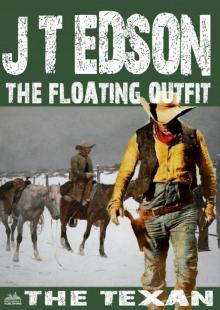 The Floating Outfit 46
The Floating Outfit 46 Dusty Fog's Civil War 11
Dusty Fog's Civil War 11 The Floating Outfit 61
The Floating Outfit 61 The Owlhoot
The Owlhoot Alvin Fog, Texas Ranger
Alvin Fog, Texas Ranger The Floating Outfit 34: To Arms! To Arms! In Dixie! (A Floating Outfit Western)
The Floating Outfit 34: To Arms! To Arms! In Dixie! (A Floating Outfit Western) The Floating Outfit 44
The Floating Outfit 44 Dusty Fog's Civil War 10
Dusty Fog's Civil War 10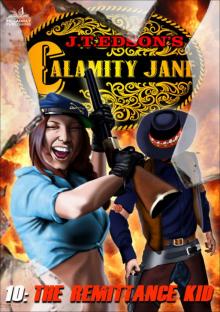 Calamity Jane 10
Calamity Jane 10 Cap Fog 4
Cap Fog 4 The Floating Outfit 51
The Floating Outfit 51 The Floating Outfit 50
The Floating Outfit 50 The Floating Outfit 49
The Floating Outfit 49 The Floating Outfit 10
The Floating Outfit 10 Apache Rampage
Apache Rampage The Floating Outfit 15
The Floating Outfit 15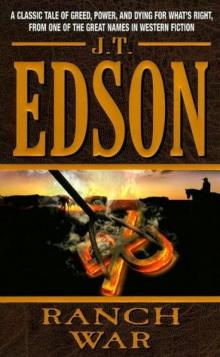 Ranch War
Ranch War The Floating Outfit 11
The Floating Outfit 11 The Devil Gun
The Devil Gun Sacrifice for the Quagga God (A Bunduki Jungle Adventure Book 3)
Sacrifice for the Quagga God (A Bunduki Jungle Adventure Book 3) Comanche (A J.T. Edson Western Book 1)
Comanche (A J.T. Edson Western Book 1) The Floating Outfit 48
The Floating Outfit 48 Wacos Debt
Wacos Debt The Rebel Spy
The Rebel Spy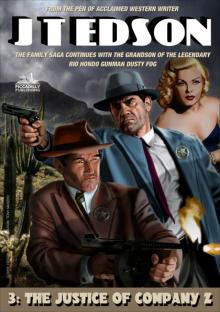 Cap Fog 3
Cap Fog 3 Trouble Trail
Trouble Trail Cold Deck, Hot Lead
Cold Deck, Hot Lead Rockabye County 4
Rockabye County 4 The Bullwhip Breed
The Bullwhip Breed Set Texas Back On Her Feet (A Floating Outfit Western Book 6)
Set Texas Back On Her Feet (A Floating Outfit Western Book 6)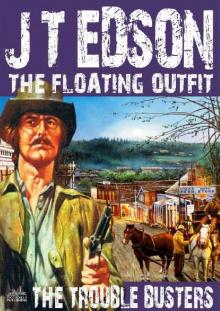 The Floating Outfit 25: The Trouble Busters (A Floating Outfit Western)
The Floating Outfit 25: The Trouble Busters (A Floating Outfit Western) Fearless Master of the Jungle (A Bunduki Jungle Adventure
Fearless Master of the Jungle (A Bunduki Jungle Adventure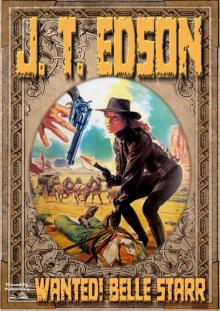 Wanted! Belle Starr!
Wanted! Belle Starr! The Big Hunt
The Big Hunt Running Irons
Running Irons The Floating Outfit 19
The Floating Outfit 19 You're in Command Now, Mr Fog
You're in Command Now, Mr Fog The Floating Outfit 27
The Floating Outfit 27 Texas Killers
Texas Killers Ole Devil and the Mule Train (An Ole Devil Western Book 3)
Ole Devil and the Mule Train (An Ole Devil Western Book 3) Bunduki and Dawn (A Bunduki Jungle Adventure Book 2)
Bunduki and Dawn (A Bunduki Jungle Adventure Book 2) The Fortune Hunters
The Fortune Hunters The Floating Outfit 12
The Floating Outfit 12 The Hide and Tallow Men (A Floating Outfit Western. Book 7)
The Hide and Tallow Men (A Floating Outfit Western. Book 7) Young Ole Devil
Young Ole Devil Slip Gun
Slip Gun The Drifter
The Drifter The Floating Outfit 45
The Floating Outfit 45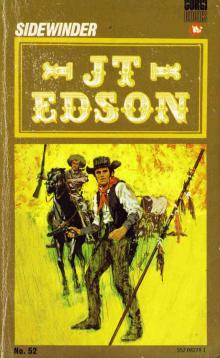 Sidewinder
Sidewinder The Ysabel Kid
The Ysabel Kid Waco 6
Waco 6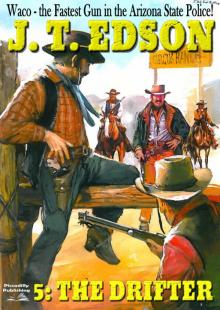 Waco 5
Waco 5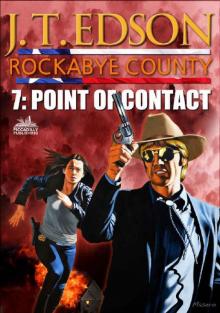 Point of Contact
Point of Contact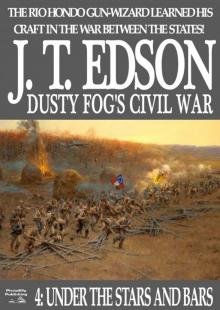 Under the Stars and Bars (A Dusty Fog Civil War Western Book 4)
Under the Stars and Bars (A Dusty Fog Civil War Western Book 4) The Floating Outfit 9
The Floating Outfit 9 Under the Stars and Bars
Under the Stars and Bars .44 Caliber Man
.44 Caliber Man The Floating Outfit 17
The Floating Outfit 17 Ole Devil at San Jacinto (Old Devil Hardin Western Book 4)
Ole Devil at San Jacinto (Old Devil Hardin Western Book 4) The Bloody Border
The Bloody Border A Horse Called Mogollon (Floating Outfit Book 3)
A Horse Called Mogollon (Floating Outfit Book 3) Waco 3
Waco 3 The Texan
The Texan The Floating Outfit 35
The Floating Outfit 35 Mississippi Raider
Mississippi Raider The Big Gun (Dusty Fog's Civil War Book 3)
The Big Gun (Dusty Fog's Civil War Book 3) Goodnight's Dream (A Floating Outfit Western Book 4)
Goodnight's Dream (A Floating Outfit Western Book 4) Waco 4
Waco 4 From Hide and Horn (A Floating Outfit Book Number 5)
From Hide and Horn (A Floating Outfit Book Number 5) The Floating Outfit 18
The Floating Outfit 18 Slaughter's Way (A J.T. Edson Western)
Slaughter's Way (A J.T. Edson Western) Dusty Fog's Civil War 7
Dusty Fog's Civil War 7 Two Miles to the Border (A J.T. Edson Western)
Two Miles to the Border (A J.T. Edson Western)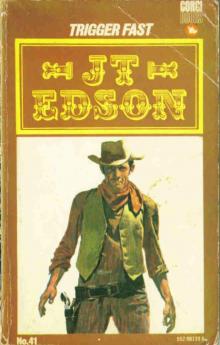 Trigger Fast
Trigger Fast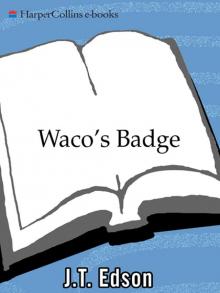 Waco's Badge
Waco's Badge A Matter of Honor (Dusty Fog Civil War Book 6)
A Matter of Honor (Dusty Fog Civil War Book 6) The Half Breed
The Half Breed Bunduki (Bunduki Series Book One)
Bunduki (Bunduki Series Book One) Kill Dusty Fog
Kill Dusty Fog Get Urrea! (An Ole Devil Hardin Western Book 5)
Get Urrea! (An Ole Devil Hardin Western Book 5) Dusty Fog's Civil War 9
Dusty Fog's Civil War 9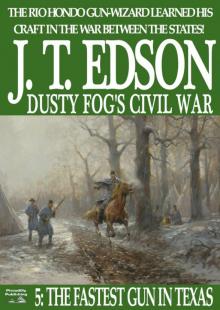 The Fastest Gun in Texas (A Dusty Fog Civil War Book 5)
The Fastest Gun in Texas (A Dusty Fog Civil War Book 5) Sagebrush Sleuth (A Waco Western #2)
Sagebrush Sleuth (A Waco Western #2) Quiet Town
Quiet Town Is-A-Man (A J.T. Edson Standalone Western)
Is-A-Man (A J.T. Edson Standalone Western) Rockabye County 5
Rockabye County 5 The Floating Outfit 14
The Floating Outfit 14 Cure the Texas Fever (A Waxahachie Smith Western--Book 3)
Cure the Texas Fever (A Waxahachie Smith Western--Book 3) The Floating Outfit 13
The Floating Outfit 13 The Road to Ratchet Creek
The Road to Ratchet Creek